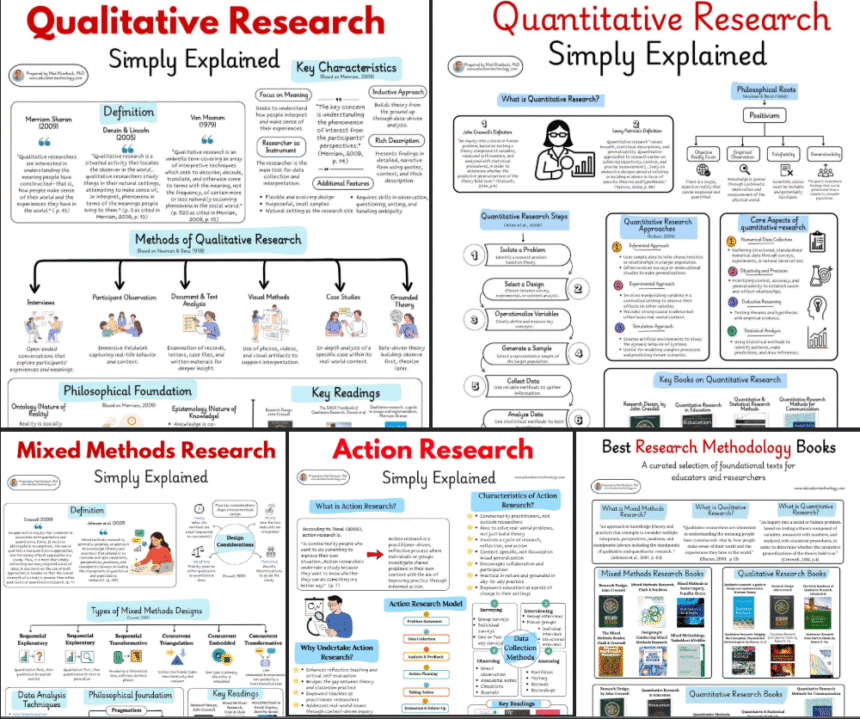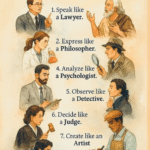Research methodology has always been a key area of academic inquiry for me. While I often focus here on topics at the intersection of AI and education, research design remains a foundational concern, one that informs both my teaching and writing. Understanding how knowledge is generated, validated, and applied isn’t optional in academic work. It’s essential.
Over the past year, I’ve found myself thinking more and more about how artificial intelligence might support the researcher’s process. This reflection eventually led to the writing of a new book, which I’ve recently completed in draft form.
The book explores the use of AI in academic research, with chapters on literature reviews, note-taking, data analysis, and yes, methodology. In working on that project, I was reminded again how vital it is to have a solid grasp of research traditions and their distinct logics.
To support that need, I’ve been sharing a series of visual summaries designed to help educators and students better understand core research paradigms. These visuals aim to distill the essence of each approach, its focus, methodology, data collection tools, strengths, and limitations without oversimplifying. They’re meant to be practical tools you can bring into the classroom, embed in a lecture slide, or use to spark discussion in a research seminar.
Today, I’ve compiled four of the most requested visuals into a single downloadable document, available here for free. The bundle includes:
- Qualitative Research: Centered on meaning-making, interpretation, and rich contextual data.
- Quantitative Research: Focused on measurable variables, statistical patterns, and hypothesis testing.
- Mixed Methods Research: An integrated approach that draws on the strengths of both qualitative and quantitative paradigms.
- Action Research: A practitioner-centered model aimed at problem-solving and iterative improvement in real-world contexts.
Each visual offers a snapshot of the methodology, highlighting its defining features and potential uses. These are not exhaustive summaries, but they’re structured to help learners and instructors grasp the core distinctions and applications of each model. I’ve used them myself in graduate-level research courses and have seen how much they help demystify what can otherwise feel abstract or overly technical.
If you’re supervising student research, teaching methods courses, or navigating your own academic writing, I hope you find this resource bundle useful. And as AI continues to reshape how we search, synthesize, and analyze knowledge, my goal remains the same: to equip educators and researchers with tools that are both conceptually grounded and practically useful.







